Leica this evening announced the latest version of the long-running M rangefinder series. It takes the design back to basics. The dimensions, almost identical with those of the M7 film camera, will transform handling and the return to the numerical model sequence will do much to confirm the camera’s credentials as the true heir to the M9.
With detail improvements in almost every respect, including a custom-designed 24MP sensor and Maestro II processor, the M10 ticks almost all the boxes on the rangefinder fan’s wish list. All critical settings are now visible when looking down on the camera — aperture, shutter-speed and sensitivity, thanks to a new ISO dial on the left of the top plate which is reminiscent of the rewind lever on the MP film camera.
The complexity of video has been dropped, in accordance with the demands of most users, and the operating system has been greatly simplified. Instead of a six-button array around the screen, the M10 makes do with three larger buttons, SL style, (Live, Play, Menu) plus the D-Pad. In another nod to the SL, the new Favourites menu can be custom set to deal with all the most common operations. This is something I have grown to love on the SL and will be a welcome addition to the rangefinder.
A larger, brighter rangefinder with a .0.73x magnification and a 30% greater field of view will further add to to the user experience.
The thinner body has been made possible by the introduction of a lens-mount collar similar to the one adopted by Sony with the RX1 and A7 ranges; a thinner body in return for a slightly longer lens length. The TL’s established Visoflex electronic viewfinder is a worth replacement for the M240’s geriatric VF2.
Overall, the improved speed and performance coupled with the new-found simplicity in designed to address most of the criticism attracted by the bulkier and over-featured M240. I predict that Leica fans will love this camera and it will emulate the Q as a sales success for the German company. The M10 will be available from tomorrow and will cost £5,600 including VAT in the UK.
Coming up from Macfilos: A full review of the new M10
LEICA PRESS RELEASE IN FULL
M is for Milestone.
Introducing the Leica M10: slimmest ever digital M delivers enhanced performance, intuitive handling and direct contro
Leica Camera has today announced the M10: the latest milestone in the Leica M rangefinder portfolio. This iconic camera system has once again set new standards with a perfect balance of long-established tradition and technical innovation, while embodying the true essence of photography like no other camera
Although its features have been adapted to meet the precise needs of contemporary photographers, the essential principles of the renowned M-System have been meticulously retained. Every single component and technical detail is focused uncompromisingly on photography. With its compact dimensions, improved performance and intuitive handling, the Leica M10 has established a new landmark in the ongoing history of the legendary Leica M.
The form factor: analogue dimensions enter the digital age
Many photographers working with analogue Leica M cameras have expressed their interest in a digital M with the same ergonomic features and size that fits perfectly in the hands. With the Leica M10, this wish has become a reality, with a top plate depth of just 33.75mm – four millimetres less than its closest relative, the Leica M (Typ 240). The Leica M10 is now the slimmest digital M of all time.
The rangefinder: a precise window on the world
The rangefinder has always played a significant role in the heritage of the Leica M-System. Several key aspects of this legendary focusing technology have been further optimised in the Leica M10. To improve the view of the subject being captured, the field of view has been enlarged by 30 per cent and the magnification factor has been increased to 0.73. For eye-relief, the optimum distance of the eye from the viewfinder eyepiece has also been lengthened considerably. Thanks to a 50 per cent increase in this distance, the viewfinder is much more comfortable to use, particularly for photographers who wear glasses.
The sensor: the digital canvas
The key component of the Leica M10 is the 24 MP, full-frame CMOS sensor developed specifically for this camera, offering significant improvements in all image performance parameters: impressive dynamic range, excellent contrast rendition, exceptional sharpness and fine detail resolution. Its unique pixel and micro-lens architecture enables a particularly large aperture, ensuring rays of light hitting the sensor even from the most oblique angles are precisely captured by its photodiodes – this has been further improved compared to its predecessor. The glass cover plate of the sensor acts as an infrared cut-off filter, therefore avoiding undesirable refraction of incoming light with additional layers of glass. The omission of a low-pass filter also ensures the Leica M10 delivers maximum sharpness, leading to significantly enhanced imaging results, especially in the case of wide-angle and very fast lenses.
Thanks to the new design of the Leica M10 sensor, the ISO sensitivity range has been expanded, allowing exposures at values between ISO 100 and 50,000, with considerably improved noise characteristics at higher ISO settings. The Leica M10 opens up entirely new genres of photography and delivers exceptional imaging performance even in challenging lighting conditions.
Image processing electronics: the next quality level
The latest-generation Maestro II image processor incorporated in the Leica M10 represents state-of-the-art, advanced processor technology. Combined with the new 24 MP sensor, it ensures that all exposures are captured with exceptionally brilliant image quality. Thanks to its 2GB buffer memory and continuous shooting at up to five frames per second at full resolution, photographers will never again miss the decisive moment. The Leica M10 is the fastest M-Camera ever made.
Furthermore, the processor allows the loupe function to be freely positioned for even better sharpness assessment. This new function can be used both on the camera’s monitor screen, and in conjunction with the Visoflex electronic viewfinder (EVF) with 2.4 MP resolution. The viewfinder features a swivel function, enabling shooting from unusual angles, and an integrated GPS module for the geotagging of image files.
Intuitive handling – focused on the essentials
Since the beginning, Leica M-Cameras have always focused on the essentials of photography. This principle has been conscientiously pursued in the Leica M10, setting new standards in intuitive handling and rapid access to the most relevant settings: for example, the controls on the back are limited to a single joystick control and just three buttons for Play, Live View and Menu. Particular settings can be selected according to personal preferences and photographic needs via a freely-configurable Favourites Menu.
One of the most distinctive features of the Leica M10 is the ISO setting dial on the top plate. For the first time in a digital Leica M, all essential shooting parameters such as focusing, aperture, shutter speed and ISO value can be selected manually without using the menu – or even switching on the camera – ensuring even more direct control and greater discretion when shooting.
WLAN module for wireless transfer and sharing
The Leica M10 is the first M-Camera with integrated WLAN connectivity. This enables the fast, wireless transfer of pictures to Apple mobile devices, where they can be edited, posted and shared on social networks, for example. The Leica M-App also allows the direct transfer of RAW data in DNG format to mobile devices for further processing with suitable apps from iOS Version 10.2. The Leica M10 can also be remotely controlled by WLAN from a smartphone or tablet, making it easy to capture pictures from unusual angles or avoid camera shake when shooting with longer shutter speeds.
Leica M10: A further step towards perfection
Oliver Kaltner, CEO Leica Camera AG, explains, “The Leica M is the heart, the backbone and the soul of Leica Camera. The Leica M10 unites state-of-the-art technology and exceptional optical performance with a conscious focus on the traditional advantages of the unique Leica M rangefinder system. In this, the innovative camera and its concentration on the functions essential to photography set new standards, while its exceptionally lean handling concept takes us a further step towards absolute perfection. Made in Germany and made by Leica – the Leica M10 stands as an outstanding brand statement for the finest arts of engineering, highest quality and craftsmanship.”
Dr Andreas Kaufmann, majority shareholder and chairman of the supervisory board of Leica Camera AG, emphasised, “The new M, the M10! Not a camera for everyone – but increasingly a camera for people who love a system that is built for the future while maintaining consistent compatibility with its past. The rangefinder system lets me frame and compose my pictures. The rangefinder system lets me tread in the footsteps of the world’s greatest photographers. The rangefinder system lets me create photographs with my own visual style. The new M10 and the wealth of present and past Leica M-Lenses – products that awaken and fulfil the desires of every photographer.”
Pricing and availability
The Leica M10 is scheduled to be available from 19 January 2017, at a suggested retail price of £5,600 including VAT.
Leica M10 – technical specifications
Camera type
Compact digital viewfinder/rangefinder system camera
Lens attachment
Leica M bayonet with additional sensor for 6-bit coding
Lens system
Leica M lenses
Leica R lenses – using adapter, available separately
Image sensor
CMOS sensor, active surface approx. 24 x 36mm
Resolution
DNG™: 5976 x 3992 pixels (24MP), JPEG: 5952 x 3968 pixels (24MP),
4256 x 2832 pixels (12MP), 2976 x 1984 pixels (6MP)
Data formats
DNG™ (raw data, compressed loss-free), JPEG
File size
DNG™: 20-30 MB, JPEG: size dependent on resolution and image content
Buffer memory
2GB / 16 pictures in series
White balance
Automatic, manual, 8 presets, colour temperature input
Storage media
SD cards up to 2GB/SDHC cards up to 32GB/SDXC cards up to 2TB
Menu languages
German, English, French, Spanish, Italian, Portuguese, Japanese, Traditional Chinese, Simplified Chinese, Russian, Korean
Exposure metering
Exposure metering through the lens (TTL), with working aperture
Metering method
For metering the light reflected by light blades of the 1st shutter curtain onto a measuring cell: strong centre-weighted;
For metering on the sensor: spot, centre-weighted, multi-field metering
Metering range
At room temperature and normal humidity at ISO 100, at aperture 1.0 EV-1 to EV20 at aperture 32. Flashing of the left triangular LED in the viewfinder indicates values below the metering range
Sensitivity range
ISO 100 to ISO 50,000, adjustable in 1/3 ISO increments from ISO 200, choice of automatic control or manual setting
Exposure modes
Choice of automatic shutter speed control with manual aperture preselection – aperture priority A, or manual shutter speed and aperture setting
Flash exposure control
Flash unit attachment
Via accessory shoe with central and control contacts
Synchronisation
Optionally triggered at the 1st or 2nd shutter curtain
Flash sync time
1/180 s ; slower shutter speeds can be used, if working below sync speed: Automatic changeover to TTL linear flash mode with HSS-compatible Leica system flash units
Flash exposure metering
Using centre-weighted TTL pre-flash metering with Leica flash units (SF40, SF64, SF26), or flash units compatible with the system with SCA3502 M5 adapter
Flash measurement cell
2 silicon photodiodes with collection lens on the camera base
Flash exposure compensation
±3EV in1⁄3EV increments
Displays in flash mode
In viewfinder only: using flash symbol LED
Viewfinder
Construction
Large, bright line frame viewfinder with automatic parallax compensation
Eyepiece
Calibrated to -0.5 dpt.; corrective lenses from -3 to +3 diopter available
Image field limiter
By activating two bright lines each: for 35 and 135mm, or 28 and 90mm, or 50 and 75mm; automatic switching when lens is attached
Parallax compensation
The horizontal and vertical difference between the viewfinder and the lens is automatically compensated according to the relevant distance setting, i.e. the viewfinder bright-line automatically aligns with the subject detail recorded by the lens
Matching viewfinder and actual image
At a range setting of 2m, the bright-line frame size corresponds exactly to the sensor size of approx. 23.9 x 35.8mm; at infinity setting, depending on the focal length, approx. 7.3% (28mm) to 18% (135mm) more is recorded by the sensor than indicated by the corresponding bright line frame and slightly less for shorter distance settings than 2m
Magnification
(For all lenses): 0.73 x
Large-base rangefinder
Split or superimposed image rangefinder shown as a bright field in the centre of the viewfinder image
Effective metering basis
50.6mm (mechanical measurement basis 69.31mm x viewfinder magnification 0.73x)
Displays
In the viewfinder
Four-digit digital display with dots above and below
LCD monitor (back)
3” colour -TFT LCD monitor with 16 million colours and 1,036,800 pixels, approx. 100% image field
Tough, scratch-resistant Gorilla® glass cover
Colour space: sRGB, for Live-View and review mode, displays
Shutter/shutter release
Shutter
Metal blade focal plane shutter with vertical movement
Shutter speeds
For aperture priority: (A) continuous from 125s to 1⁄4000s, for manual adjustment: 8s to 1⁄4000s in half steps, from 8s to 125s in whole steps,
B: for long exposures up to maximum 125s (in conjunction with self-timer T function, i.e. 1st release = shutter opens, 2nd release = shutter closes),
(1⁄180s): Fastest shutter speed for flash synchronisation, HSS linear flash mode possible with all shutter speeds faster than 1⁄180s (with HSS-compatible Leica system flash units)
Continuous shooting
Approx. 5 pictures/s, 30-40 pictures in series
Shutter release button
Two-stage, 1st step: Activation of the camera electronics including exposure metering and exposure lock (in aperture priority mode), 2nd step: Shutter release; standard thread for cable release integrated
Self-timer
2s (aperture priority and manual exposure setting) or 12s delay, set in menu, indicated by flashing LED on front of camera and corresponding display in monitor
Turning the camera on/off
Using main switch on top of camera; optional automatic shutdown of camera electronics after approx. 2/5/10 minutes; reactivated by tapping the shutter release
Power supply
1 Lithium-ion rechargeable battery, nominal voltage 7.4V, capacity 1300mAh.; maximum charging current/voltage: DC 1000mA, 7.4V; Model No.: BP-SCL5; Manufacturer: PT. VARTA Microbattery, Made in Indonesia, Operating conditions (in camera): 0°C – + 40°C
Charger
Inputs: 100-240V AC, 50/60Hz, 300mA, automatic switching, or 12V DC, 1.3A; Output: DC 7.4V, 1000mA/max. 8.25V, 1100mA; Model No.: BC-SCL5; Manufacturer: Guangdong PISEN Electronics Co., Ltd., Made in China, Operating conditions: 0°C – + 35°C
GPS
Only with Leica Visoflex viewfinder, available as an accessory
Not available everywhere due to country-specific legislation, i.e. enforced automatic shutdown in those countries
Data are written to EXIF header in picture files
WiFi
Complies with IEEE 802.11b/g/n standard (standard WiFi protocol), channel 1-11, encryption method: WiFi-compatible WPA™/WPA2™ encryption, access method: Infrastructure mode
Camera body
Material
All-metal die cast magnesium body, synthetic leather finish. Brass top panel and base, black or silver chrome plated finish
Image field selector
Allows the bright-line pairs to be manually activated at any time (e.g. to compare detail)
Tripod thread
A ¼ (¼”) DIN stainless steel in bottom
Operating conditions
0 – 40°C
Interfaces
ISO accessory shoe with additional contacts for Leica Visoflex viewfinder (optional accessory)
Dimensions W x D x H
Approx. 139 x 38.5 x 80mm
Weight
Approx. 660g (with battery)
Included with camera
Charger 100-240V with 2 mains cables (Euro, USA, varies in some markets) and 1 car charging cable, Lithium-ion battery, carrying strap, body bayonet cover, cover for accessory shoe
_______________
- Subscribe to Macfilos for free updates on articles as they are published. Read more here
- Want to make a comment on this article but having problems? Please read this

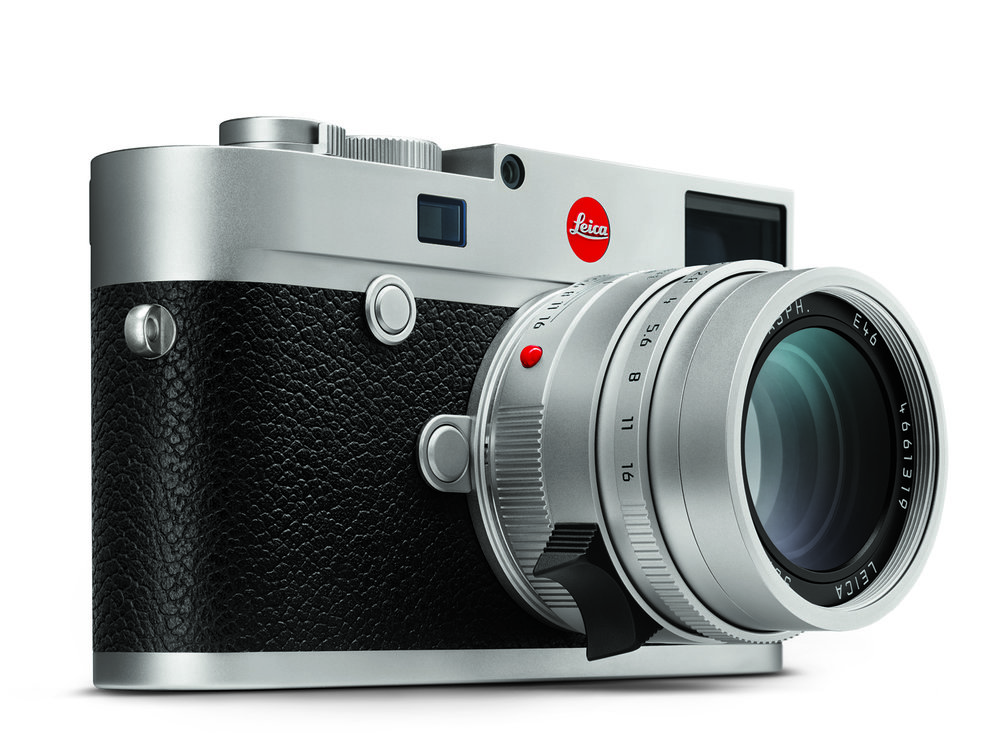
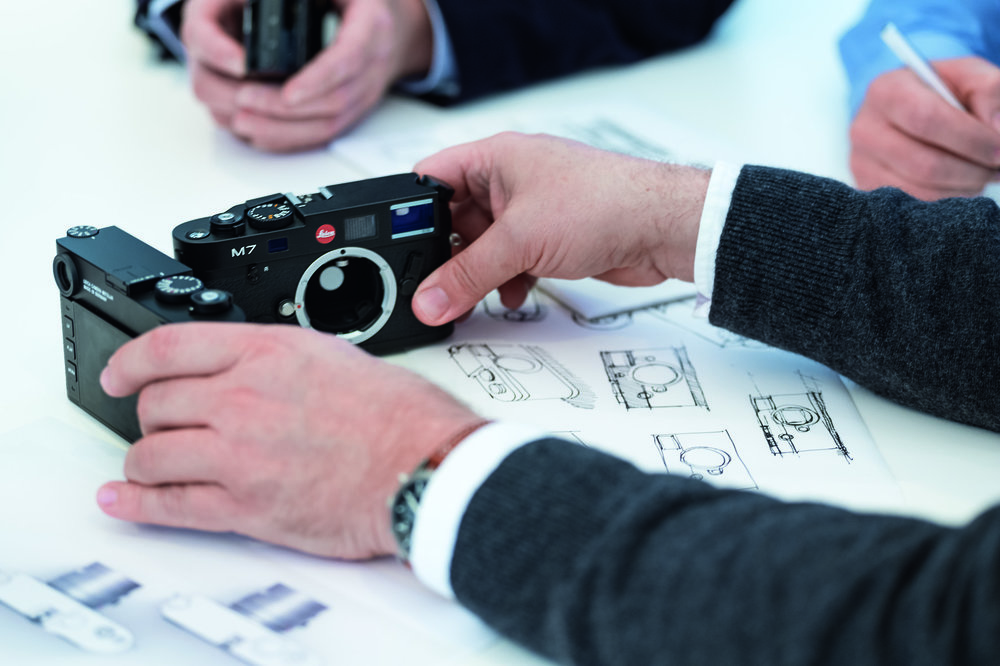
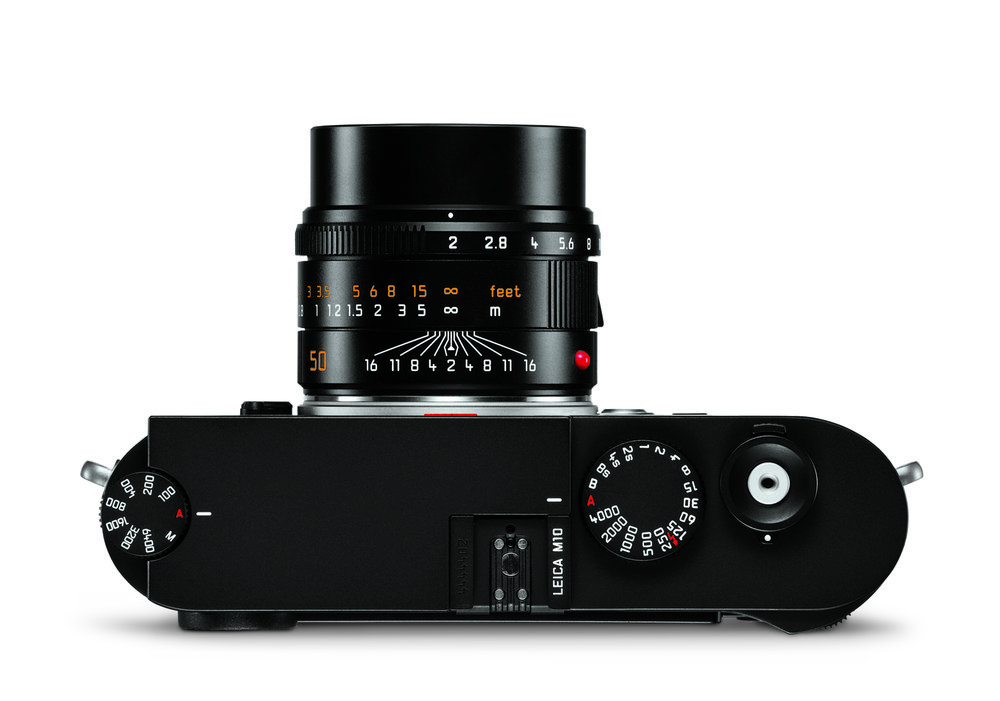
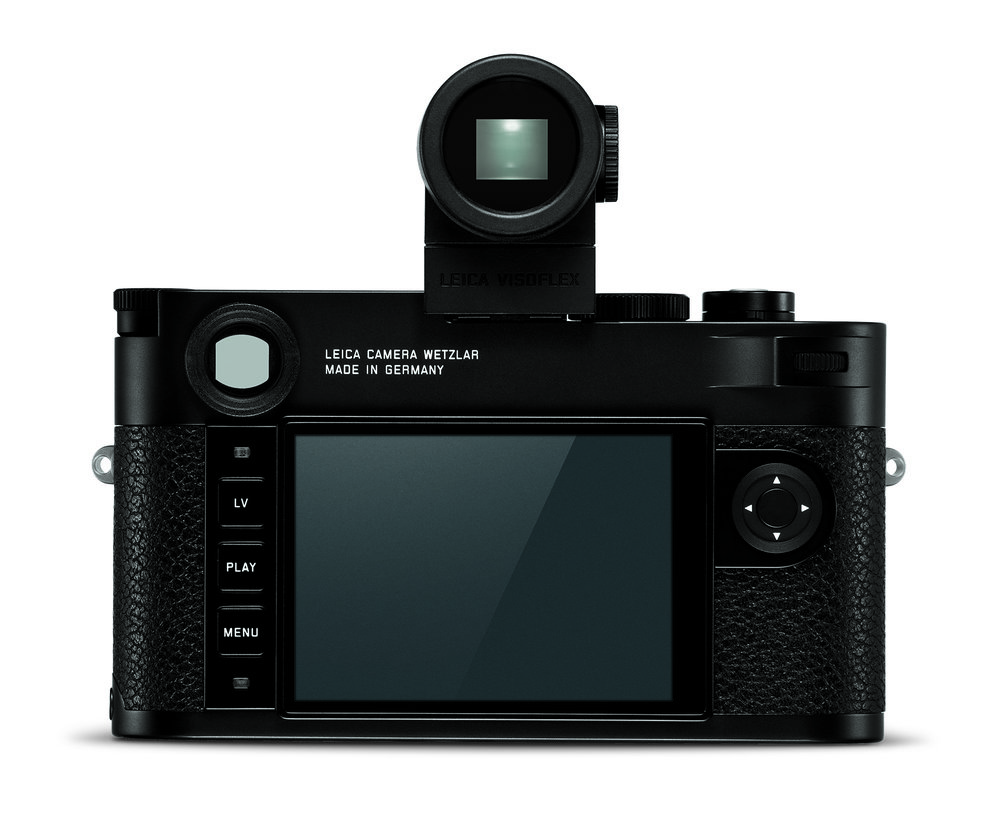
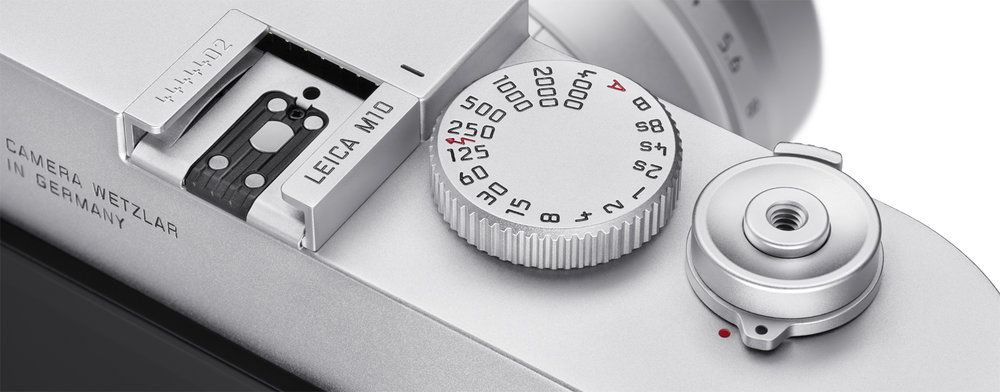
Thanks, Mike. So I can keep my dream of photographic nirvana !
It sounds lovely and worth saving for for the next ten years! What I don’t see commented on anywhere by those of you who know is the reliability of the rangefinder mechanism. Does it easily go off true? Does it need frequent readjustment? If so, who does that and what does it cost?
I have never had a rangefinder need adjustment and I’ve owned more than my fair share of Leica Ms over the years. I’ve heard of it being necessary after an accident or fall. If it does need work Leica will send it back to the factory. I have no idea how much but better start saving. Alternatively a deale such as Ivor Cooper at Red Dot Cameras will have a specialist he could send the camera to.
It is a nice camera and I will be ordering one. For me it is ‘slightly less than perfect’. For my usage the perfect M would be one with the exposure compensation on a wheel rather than the ISO. The former is something I use all of the time, whereas with modern sensors with large ISO ranges I rarely touch the ISO setting. This one still has a variation of the ‘clunky’ exposure compensation system on the M240. It also has a lot of features still under menu control which I dislike. Steve Huff’s video worried me a lot when he started playing around with menus, but then he is a ‘tech geek’.
The slightly smaller size is welcome, even if it involves a new battery design. The new sensor will expand exposure possibilities, even though I feel that the M240 is actually already quite good in this regard. Jono’s photos show what is possible but I reckon that he is such a good photographer that he would get great photos out of any camera.
There is very little discussion here and elsewhere about the Viso-flex attachable viewfinder. It is being slightly ignored like an embarrassing uncle at a wedding. I know that Leica produce the EVF only SL but I have no interest whatsoever in that camera , particularly when it is mated with its gigantic native lenses. Other manufacturers have managed to produce EVF only cameras in much smaller sizes. While I would generally prefer OVFs, I have no theological objection to EVFs. After all, anyone posting or reading on this site is using an electronic screen. I will be ordering the EVF to go with this camera as there are a range of uses to which it can be put, even though my normal use will be OVF/RF.
I am not in a hurry to get the new model as I already have many cameras in my collection, some of which took 90 years to reach me.
William
I had a little chuckle yesterday when most of the M10 details, including photographs, were leaked on a Japanese web site. The translation stalled with this statement, however:
Electronic viewfinder "Leica Bizofurex" compatible
I had to puzzle over Bizofurex and, for a moment, panicked that I had bought the Visoflex in advance, believing it would mate with the M10. But then I realised this was a comedy of errors — Visoflex reproduced in Japanse characters (where consonants always seem to be accompanied by a vowel suffix) and then translated back into English by someone who had not heard of the Visoflex. I shall now call it my Bizofurex viewfinder. It’s rather fitting really because, as you say, it is certain to infurex me because of its side.
You remind me of an infamous occasion when a British trade delegation went to Japan headed up on the official (rather than political) side by a top level civil servant, otherwise known as a ‘Permanent Secretary’. The Japanese officials on the other side conveniently provided name plates in Japanese and English for the British delegation with names and ranks. The ‘Permanent Secretary’ was, however, described as an ‘Everlasting Typist’.
William
Perhaps "Everlasting Typist" is a freudian description of reality.
Touche. I was once described as ‘Sir Humphrey’ myself by an American colleague when I was working in a Government body in the Middle East. I hope, though, that I had a little bit more to contribute than obstruction and bureaucracy.
William
As someone who enjoys evening and night time street photography, the improved and larger viewfinder is very welcome, as is the dedicated iso dial, together with the improved hi iso-performance that is being reported. I’ll miss the video capability (and will probably be the only person to say this) as I did find it very convenient in that it avoided the need to switch between cameras – and as still images could be taken while the video was being recorded, it also allowed quite a nice atmospheric record of a shoot to be compiled, as long as you had a big enough card.
Not with standing the above this looks like a big improvement in performance and handling and something that that many of us are been looking for.
It’s interesting to see that Leica plan to continue with the M240 for the very reason you highlight. I wouldn’t be surprised if they restrict it to the M-P. On the other hand, the M-D and M262, not to mention the Monochrom, are crying out for the M10 slimming routine.
Perfection and customer satisfaction and acknowledgement personified!
Sony M10
A little less complicated, though, and will appeal to the minimalists among us.